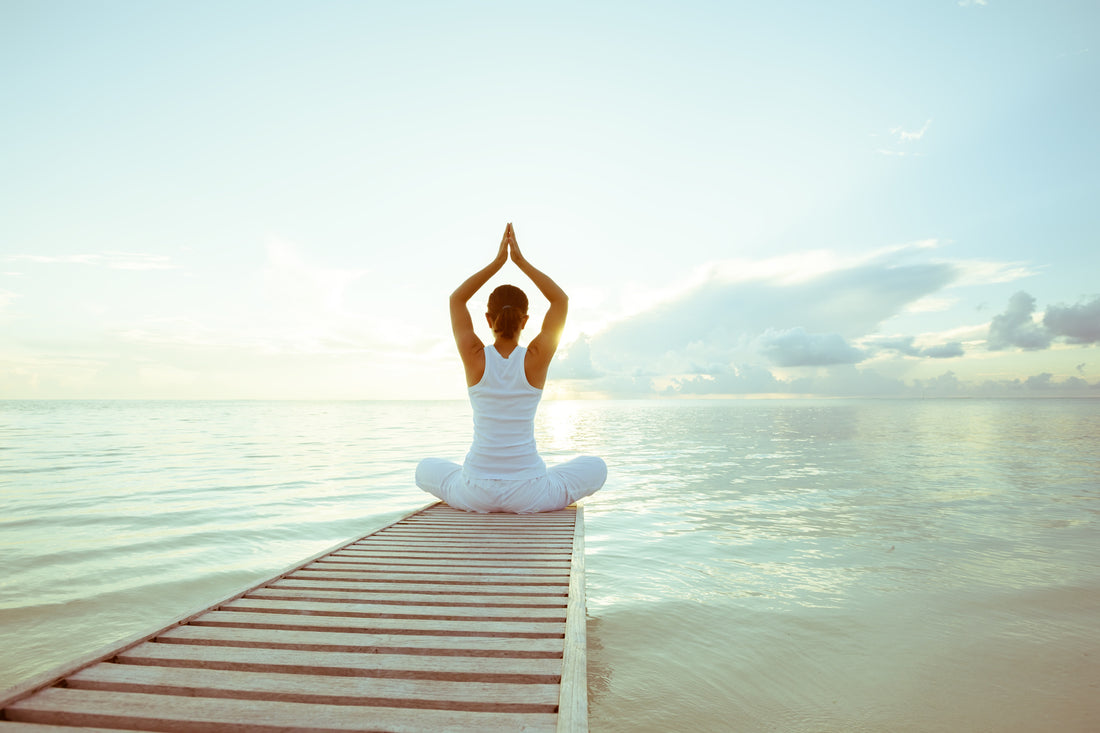Yoga, which has been practiced in some forms for thousands of years, is a relaxing strength training style of exercise that has many health benefits. From relieving stress and increasing flexibility to improving your mental and muscular acuity, yoga is seen by some as the fountain of youth.
If you're new to the practice of yoga, you may be wondering exactly where to start. Whether you're looking for the hatha yoga body-mind experience or just an excellent low-impact workout, you will need an assortment of yoga equipment to get the most out of your sessions.
As you develop your personal style of practice, you will discover which equipment suits you the best. In the beginning, though, you just need a handful of items to get you going. Read on to discover how to get started!
Yoga Mat
Perhaps the most fundamental piece of equipment for practicing yoga, a mat will serve you well in every session. Mats give you a bit of padding as well as grip, as yoga is typically practiced with bare feet. A mat also keeps your face away from the ground and helps you have a more hygienic experience.
Mats come in a variety of materials, the most common are made from a springy natural rubber or foam material. Cotton mats, often considered the first types of yoga mats, are soft and absorbent. Other available styles are made from hemp or grass, which can have a great natural woven feel.
Towel and Water Bottle
Yoga, though slow and deliberate, is a cardiovascular exercise that will get you sweating. To help keep the sweat at bay, a towel is essential. A common bath towel is perfectly fine, but you can also use special yoga towels that fit along the length of your mat.
Staying hydrated during your session is very important as well. Make sure to keep a spill-proof water bottle to replenish what you sweat out.
Yoga Clothes
Wearing the correct attire is important to make sure you can utilize your entire range of motion. Loose or ill-fitting items can get in the way during certain stretches, so choose athletic wear that fits closely but comfortably.
Pick items that are breathable and can stretch with your body. Moisture-wicking fabric is beneficial here. Shoes aren't necessary, but arch support bands and gripping socks are options if you need them.
If you are taking yoga classes in a facility, consider bringing an extra layer that is easy to remove. While you will quickly warm during a session, the initial temperature may not be comfortable depending on their climate control.
Yoga Blocks
Especially for new practitioners of yoga, blocks are an extremely helpful tool. These over-sized foam bricks are lightweight, but versatile for ensuring you have a firm place to plant a hand or foot. A yoga block can be a stepping stone to complete a pose while you work on extending your flexibility.
Depending on the help you need, a yoga block can be turned to one of its many sides to give a few (or several!) extra inches of support. It can also help lengthen certain stretches or poses and push you a little further, when you are more seasoned, depending on where you place them.
Yoga Bands
Bands are also a useful tool to either lower or raise the difficulty, depending on how you use them. A band can support your body and help you hold your balance for the early days of your yoga journey, but can also be used for resistance to increase the level of a pose.
You may want to pick a lightweight band in the beginning and increase to higher resistance bands as your skill improves. Packs with multiple levels of resistance are a great way to get a variety of resistance bands for one price.
Yoga Bag
In order to carry your yoga supplies, you'll need a bag. Totes are available that can accommodate the oblong shape of a rolled yoga mat, or include straps to affix it to the outside. With a good bag, you can carry your block, bands, mat, water, and even a change of clothes.
Alternatively, you can also get a strap for your mat for a separate and low-profile carrying system.
Extra Credit: Whale Back Bender
Yoga back benders are curved spinal supports that help you extend your spinal column. The shape of this piece of equipment resembles the curve of a whale's back, hence the name.
Bending backward over it can help loosen back muscles and compression issues, as well as elongate the spine. Not only can this help alleviate back pain, but can improve your yoga (and daily) posture. The back bender also assists with several different yoga poses.
Yoga Equipment Can Heighten Your Experience
Yoga's health benefits can be maximized with a few simple yoga supplies. While you may find that a few basic essentials are all you require in the beginning, you can add extra yoga equipment to suit your practice style as you progress in your poses. There are even smartphone apps you can use to kick your routine to the next level!
With regular sessions, you'll experience better stamina, strength, flexibility, and yoga skills. You'll also gain a better understanding of what equipment can help take your self-development to new heights.
Do you have your own favorite yoga essentials that really improve the quality of your sessions? Leave us a comment below! And check our blog for more in the latest fitness technology and lifestyle tips.

